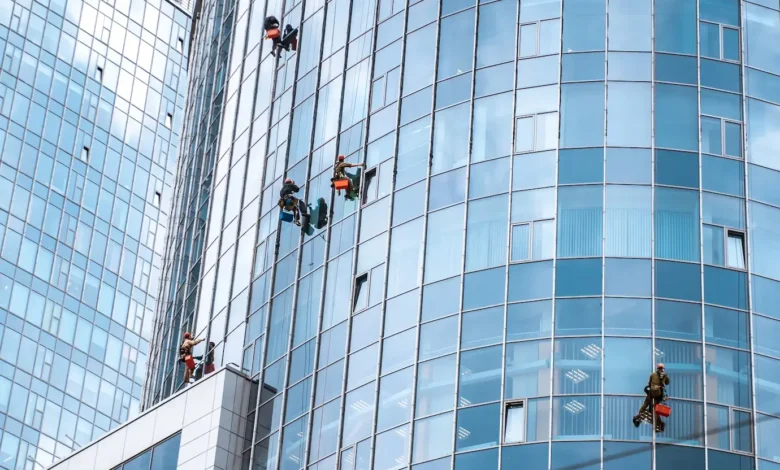Working at Heights: Ensuring Safety and Efficiency in Rope Access

Working at heights is a challenging and potentially hazardous task that requires specialized skills, equipment, and safety protocols. Rope access, also known as work on ropes, has emerged as an efficient and effective method for performing tasks at elevated locations, such as construction sites, bridges, towers, and high-rise buildings. In this article, we will delve into the world of rope access, exploring its importance, the training and certification required, the equipment involved, and the safety measures that ensure a successful and secure work environment.
The Significance of Rope Access: Rope access evaluates critical implications in various services, including construction, maintenance, and repairs. It enables access to hard-to-reach places where traditional means such as scaffolding or cranes may be impractical or cost-prohibitive. Rope access techniques facilitate efficient and effective task handling, minimizing downtime in operational activities and shortening project completion timelines.
Training and Certification: Working on ropes requires specialized training to ensure safety, effectiveness, and task execution efficiency. Organizations such as the Industrial Rope Access Trade Association (IRATA) and the Australian Rope Access Association (ARAA) support training and certification programs. These programs cover essential skills such as rope maneuvers, connections, emergency techniques, and equipment usage. Certification levels, such as IRATA Level 1, 2, and 3, indicate the knowledge and experience of rope access technicians.
Equipment: Rope access relies on specialized equipment to ensure safety and efficiency. This includes harnesses, ropes, descenders, ascenders, carabiners, helmets, and other personal protective equipment (PPE). These tools are carefully selected to aid in secure anchoring, reliable support systems, and controlled movement along ropes. Regular inspections and equipment maintenance guarantee integrity and safe operation.
Safety Measures: Safety is paramount when working with a rope access system. Rigorous risk assessment and job safety analysis are conducted to identify and evaluate control measures. Workers must strictly adhere to safety protocols, including the use of double-rope systems, backup devices, and redundant anchoring points. Regular safety briefings, communication, and training are essential to ensure compliance with safety guidelines. Crisis response scenarios and operational procedures for absence and immediate safe evacuation of workers are also established.
Advantages of Rope Access: Rope access offers several advantages compared to conventional access methods. It is highly versatile, enabling access to nearly any height or location. The quick assembly and dismantling of rope access systems minimize downtime and interruptions. Rope access teams are typically smaller in size compared to those working on scaffolding or cranes, reducing congestion and improving maneuverability in tight spaces. Additionally, the method has a minimal environmental impact, as it requires less equipment and infrastructure.
Applications: Rope access finds applications in various industries and tasks. It is used for building maintenance, including window cleaning, inspections, and repairs. Rope access technicians also perform tasks such as welding, installation, insulation, and mechanical repairs in industrial settings. The method is employed in bridge and tower maintenance and even in the entertainment industry for rigging and acrobatics.
Task Management for Rope Access: Successfully executing a high-altitude task involves meticulous planning for rope access. Prior to undertaking a project, a thorough risk assessment is conducted to identify potential hazards and determine the effectiveness of control measures. Environmental factors, such as weather conditions, wind speed, and extreme temperatures, are taken into account, as they can impact the safety of rope access work. Mitigation strategies may include fall protection systems, establishment of safety lines, or setting up restricted zones to prevent unauthorized interference.
Communication and Teamwork: Effective communication and teamwork are crucial for safe and efficient rope access operations. Clear communication between team members, supervisors, and ground support personnel is essential for task coordination, information exchange, and addressing safety-related issues. Implementing a communication hierarchy ensures that everyone is aware of their roles and outcomes, and that any changes or updates are communicated to the entire team.
Continuous Training and Skill Development: Rope access is a constantly evolving field with new techniques, equipment, and safety practices. Staying up-to-date with the latest rope access techniques, equipment usage, and safety measures requires ongoing training and skill development. Regular refresher courses and competency assessments ensure that technicians are competent and capable of performing their tasks with safety and efficiency.
In conclusion, rope access is a highly specialized and efficient method for working at heights. Effective and safe access to difficult locations allows for shortened project timelines and minimized downtime. Proper training, certification, and adherence to safety protocols are crucial for ensuring competent and reliable workers. With rope access technology, the industry in Australia and beyond can execute its tasks with increased efficiency, effectiveness, and cost-effectiveness.
Article Source: https://ropeboys.com.au
Address: 40 Darling St, Glebe NSW 2037, Australia
Phone: +61 402 375 162




